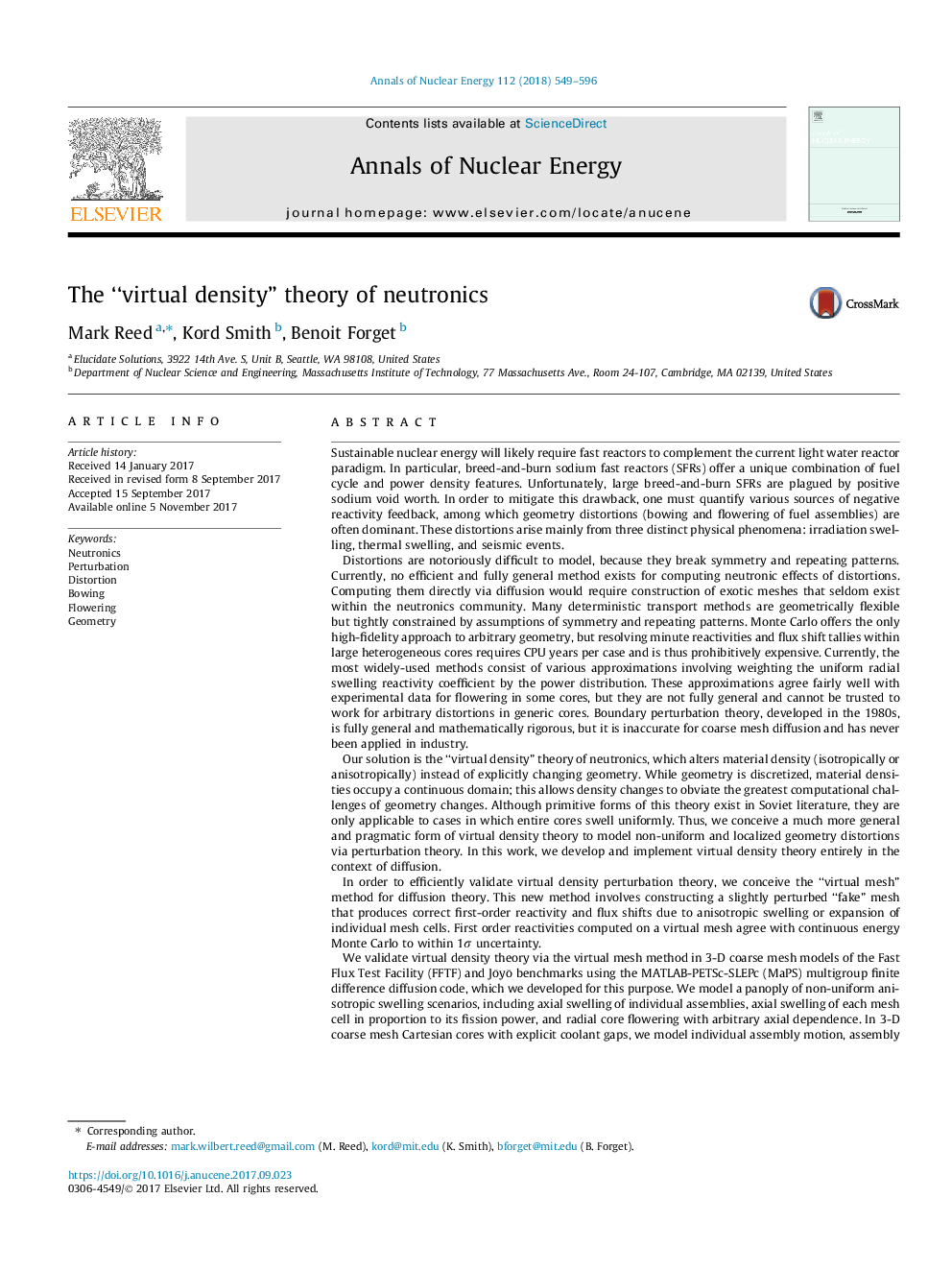| Article ID | Journal | Published Year | Pages | File Type |
|---|---|---|---|---|
| 8067272 | Annals of Nuclear Energy | 2018 | 48 Pages |
Abstract
We validate virtual density theory via the virtual mesh method in 3-D coarse mesh models of the Fast Flux Test Facility (FFTF) and Jo¯yo¯ benchmarks using the MATLAB-PETSc-SLEPc (MaPS) multigroup finite difference diffusion code, which we developed for this purpose. We model a panoply of non-uniform anisotropic swelling scenarios, including axial swelling of individual assemblies, axial swelling of each mesh cell in proportion to its fission power, and radial core flowering with arbitrary axial dependence. In 3-D coarse mesh Cartesian cores with explicit coolant gaps, we model individual assembly motion, assembly row motion with arbitrary axial dependence, and assembly row “s-shape” bowing. In all cases, we find that virtual density perturbation theory predicts reactivity coefficients that agree with virtual mesh reference cases to within 0.01%. These reactivity coefficients are two to four orders of magnitude more accurate than those computed via boundary perturbation theory. In general, this virtual density perturbation method can precisely predict reactivity coefficients due to anisotropic swelling or expansion of any core region in any direction.
Related Topics
Physical Sciences and Engineering
Energy
Energy Engineering and Power Technology
Authors
Mark Reed, Kord Smith, Benoit Forget,
